|
Rob McLennan has been curating a monthly poet "spotlight" via Medium, and, this month, the series features a poem of mine along with an author statement.
0 Comments
A few days ago, The Bangalore Review published a conversation I had with poet and artist Sophia Naz. We discussed poetry and the unsayable, Sandhya Bhasha, renewal, memories that survive surveillance, oral traditions, women and flying, animist perspectives, and more. Now Sophia and I will be reading together at the San Francisco Public Library in April. We will be at the Latino/Hispanic Meeting Room in the Main Library. Please join us if you can. Roots and Resonance A reading by two South Asian diasporic poets, Monica Mody and Sophia Naz, whose poetry takes on/seeks to retell the histories and memories of the sacred and the profane, the oral and the experimental, the liminal and the subliminal, India and Pakistan. The poets share commonalities across partitioned ancestral stories, and they persist through the ambiguities of singing the dead to life. Sunday, April 14, 1pm-2:30pm. Hello all, It fills me with delight to announce the imminent arrival of Wild Fin, my new poetry collection from Weavers Press. The book is now available for pre-order. The art that is featured on the cover is a detail from San Francisco-based Anne Marguerite Herbst's magnificent painting, "Lighthouse Present." Deep gratitude to Maw Shein Win, Carrie Hunter, and Divya Victor for contributing their amazing blurbs to the book!
This interview celebrating Bright Parallel was published on the CIIS website in September. Thank you very much for the great questions, Christina Fanciullo! Read below:
What inspired this collection? I was not consciously working towards a collection as I wrote the poems included in Bright Parallel, even as I developed them concurrently with my doctoral studies and research at CIIS. Over the years, many poems were published in a number of journals, magazines, and anthologies. I started putting together a manuscript in 2019 while I was in India after having earned my Ph.D. I was waiting for my work authorization to come through, and a conversation with a fellow poet and friend instigated the process. These are poems about feminist unsilencing, ancestral reclamation, earth connection, ritual, the goddess, language, belonging, and a remythologizing of the self. What sustained you through the process of exploration and creation? During the process of writing poetry, one can get access to a kind of poetic knowing which allows one to touch something vaster and more entangled than the rational, objective self. Since my academic and epistemological project was about the knitting together of the fragments within my/our stories and realities, I turned to poetry as one of the methods to facilitate the weaving. I also have, I believe, an older pact with poetry where I must make space, sooner or later, when it knocks, to listen and to bring what I hear into form. How does your writing intersect with your teaching? I have been very fortunate to have been invited to teach courses that help me deepen my relationship with theories and paradigms I am interested in such as the embodied thealogy of Tantra and visionary imagination. Continuing to think into transformational philosophies — while developing syllabi, for instance, but especially during conversations in class — nourishes me and clarifies for me emergent/nascent ideas. When I get to teach courses on writing (academic or creative), animated discussions about craft and process often ensue — which are usually equally good reminders for my own writing practice! Readers have praised your “attunement to the natural world.” How do you maintain your groundedness to the earth in your work? Through practices such as walking, ritual, making offerings, etc., I come to know the self as centered not only in a ‘me’ but as a relational constellation attuning to the wild-at-large: something wild, provisional, expansive. My work grows out of these relational ontogenetic practices. The living presence(s) I encounter guides, ideally, the images, metaphoric field, language, scope, and soul of the work. It is an incredible honor to finally be able to share with you that this Fall I will be starting as Core Professor in the Mythological Studies Program at the Pacifica Graduate Institute. I am always amazed by the directions that Spirit opens for me—the steering often skitters me "off course" from what the ego had penned as desirable; a course more in integrity with the deeper purpose reveals itself. To all my teachers, mentors, students, colleagues, family, friends, and ancestors—shukriya, thank you. I arrive into the knowing of my work because of you, your trust and support. May the work I offer continue to feed the soul well of the world. May even more robust currents of reciprocity open up. To my colleagues in the Myth Program who have welcomed me so fulsomely, my gratitude. To be welcomed for all of my onto-epistemic commitments—relational post/decolonial scholarship, borderlands feminisms, as well as my creative work and vision, and brown, transnational self—is such a gift. I am excited and proud to be working alongside the good people of this esteemed program, and at Pacifica, whose mission to tend soul in and of the world resonates with me. May we redream our dream of the world and our role in it together.
Please join me for the book launch for Bright Parallel at the California Institute of Integral Studies on August 24 at 2PM. I will be reading from the collection and be in conversation with Carolyn Cooke.
Free and open to the public. Desai | Matta Gallery, CIIS, 1453 Mission St, San Francisco, SF 94103. My thanks to The Arts and MFA Programs at CIIS for hosting the launch. 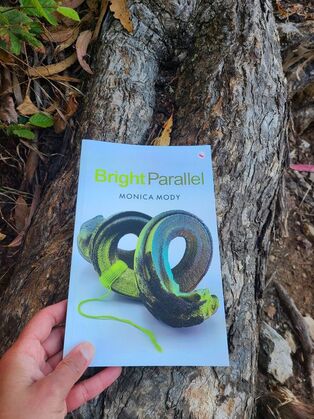 The poems are beacons for me too. They hold in them the gentle, fiery guidance of transformation and the remainders of maps. Make your own map; you are the key. They track the unraveling of self, identity, identifications. They trace a becoming—how the ancestors, the motherline opened its embrace wide and invited me in. These are the poems in which I stepped all the way in—I was not pretending. The trail leads me yet again to Her eye, unclouded and clear-seeing, where life begins. Then it is not unusual at all that with its publication, the book has searched me for all the ways in which the ego holds one in trance: Do you compare well to others? Do you please others? The trance still has a bit of hold on you, the poems laugh at me. They have already counted my deaths and are ready to witness me die again, be reborn, here for the long game. The spiral moves, still. * But a bit of thanks also (beyond that acknowledged in the book). To Jeet Thayil, who may not remember this, but who—in the way he can be blunt, in the way he does the work of art—chided me, when he heard about the poems in my dropbox, for not putting them together as a book, for not already working on my second book. That nudge over dinner was what got me to move through my alienation from certain anthropological practices in spaces that produce and promote literature, to begin working on the manuscript that became Bright Parallel. The earliest unwieldy draft started right then, in Bangalore. A second thanks to Ranjit Hoskote. I had begun communication with the amazing Ashwini Bhat in March 2022—I knew I wanted a woman artist from South Asia on the book's cover—just like for my chapbook Ordinary Annals, for which Palija Shrestha was kind enough to let us use her painting—isn't it true that the worlds we are a part of even now are defined and ordered by the hegemonies of masculine subjectivities—and Ashwini's work is exquisite, she is exploring some of the same faultlines in culture, nature, and spirit I have been trying to put my finger on. It was Ranjit who went through her oevre and found "Fainting in Coils 5." He said, "I like it for the same reasons as you do - the relay of material difference, the interplay of past and future, the mythic resonances of coils and (un)coiling." I said, "I love this image. The contrast of ceramic and thread, continuity/fragment, history/future, susurration..." "And the evocation of mossiness..." I have been reading The Flowering: The Autobiography of Judy Chicago and remember visiting The Dinner Party in 2017, as well as how I made the visit happen when I only had a few hours in New York. (I was returning from an Association for the Study of Women and Mythology Symposium held at Pendle Hill.) I remember taking the subway to Brooklyn Museum, bags in tow, before making my way back to The Moving Center New York for dance practice, then to the airport. But I did not remember how the ancestors had given me persistent, unmistakable signals about The Dinner Party until I reread the community letter I had sent the day after my visit.
During this phase, I was still in an early movement of birthing my PhD dissertation, and seeing this amazing installation art—ceramic, porcelain, textile, embroidery, text, weaving—nourished and awed me in more ways than one. I had several readers write to me after I sent that edition of the community letter about the impact DP had had on them and their work. With this in mind, it is quite extraordinary to read in her autobiography how Judy Chicago became Judy Chicago: how she confronted—internally, at first—the norms that constituted being taken seriously as an artist; how she gradually came to make the connection between her own struggles with the struggles of other women artists across the ages to express their ways of being, doing, and seeing the world; how she gave herself permission to move out of forms and processes that would be validated by art-men; and how she created the frames of references that would make her work visible—through making, research, and teaching. In the first quarter of the book, this becoming is a core theme. There were points in my reading during which I was struck by the resonances with some of my own path. For instance, the struggle to give myself permission to move out of the frames of reference I learned during my literary studies, where serious writing focuses on ‘form’ and not on the ‘content’; where focusing on ‘content’ compromises the art. Or giving myself permission not only to write 'slant' or conceptually, but also to write with 'sincerity.' Chicago's self-telling of how she came into her own is reminding me of all the ways one grows as an artist. 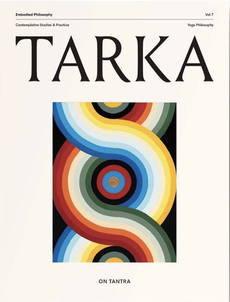 I have an essay titled "When Yoginis Appear With Animals: Animistic Relational Elements and the Non-Dual Matrix" in the "On Tantra" issue of Tarka Journal. This was an important essay for me to write into and from the borderlands of lineage and memory in tantra, earth-based spirituality, and theory as healing. While the text was written as a cross-genre invitation—and accepted by the journal as such—only the first part of the article appears in the print issue. As I write in the introduction to the text: "The text brings together the academic and artistic modes in a process of a praxis that engages complexity and a both/and orientation towards epistemology. Its invitation to multiple perspectives becomes a stimulus to the reader to open a space of being that can mediate the gap between concepts and experience. The casting of the language of poetry enables meanings and responses to emerge that cannot be generated through academic prose alone." Distinguished scholar of Indian art Vidya Dehejia had written to me about the poem sequence: "The poetry scares me—it is so powerful." While reading the academic essay alone will bring forth only part of the meaning, gnosis, and critical knowledge I had intended when bringing two ways of writing in conversation, I hope you will still be stimulated by it. Likewise, I hope one day poetry will receive its due recognition in mainstream academic conversations for the ways of knowing and the epistemic encounters it enables and fosters. I hope poet-scholars will continue to create from that exigency. UPDATE: I heard back that Tarka is working to make the article available in its totality in the online version of the issue on tarkajournal.com. In Rahul Rawail's Raj Kapoor: The Master at Work, you meet a filmmaker who trusted and followed through with his creative instinct, vision, and direction completely—not letting himself be stopped by obstacles. You meet a perspicacious and generous mentor. You meet someone in touch with his inner child—a lover of fine things, a prankster. He was who he was unabashedly. He was Raj Kapoor. Beloved auteur, artiste, actor.
In the Prologue to the book, Kapoor appears to Rawail in a dream, and reminds him that "using your creativity, intelligence and the human feel" were "the most essential ingredients for making a film." The second half of the book narrates episodes from the making of the film Bobby—and, towards the end, we read of incidents from Rawail's own filmmaking process, in which he shows how he handled problems by applying what he had learned from Kapoor. Somehow—beautifully, magically—the book lets you be mentored by Raj Kapoor himself. At least, this was the smidge I was left with—presence and blessing lingering. What a beautiful gift, and to me its arrival felt unforced, flowing out of the deep respect and affection with which Rawail himself received—and shares—what he learned from his mentor and teacher. |
Get updates of New blog postsconnect with me ON SOCIALSArchives
April 2024
|
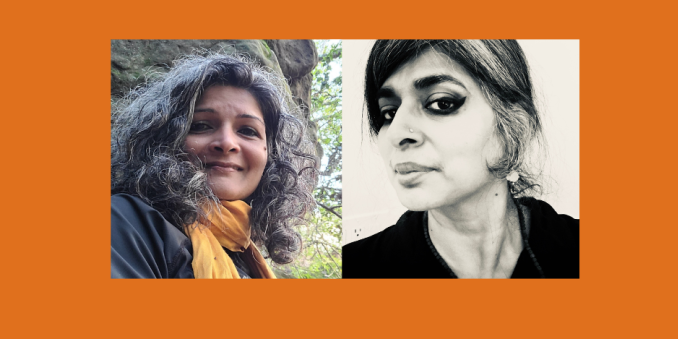
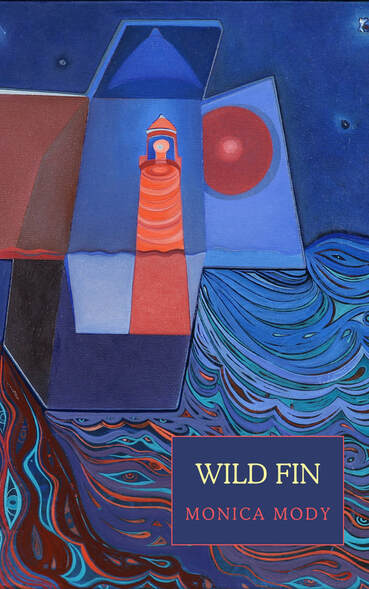
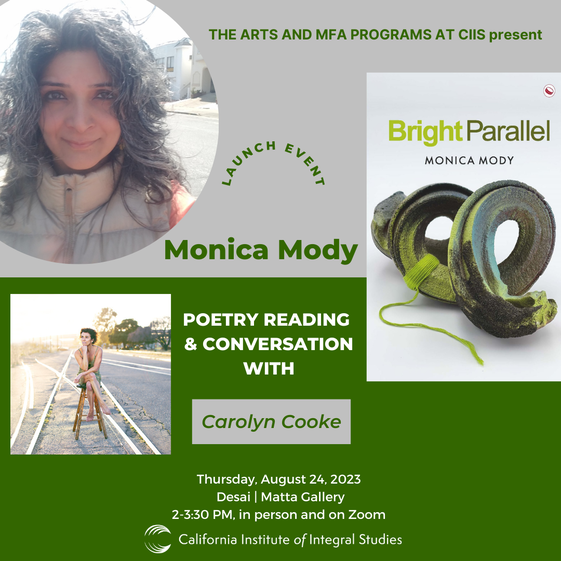
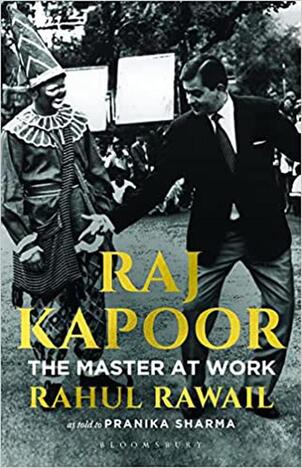
 RSS Feed
RSS Feed